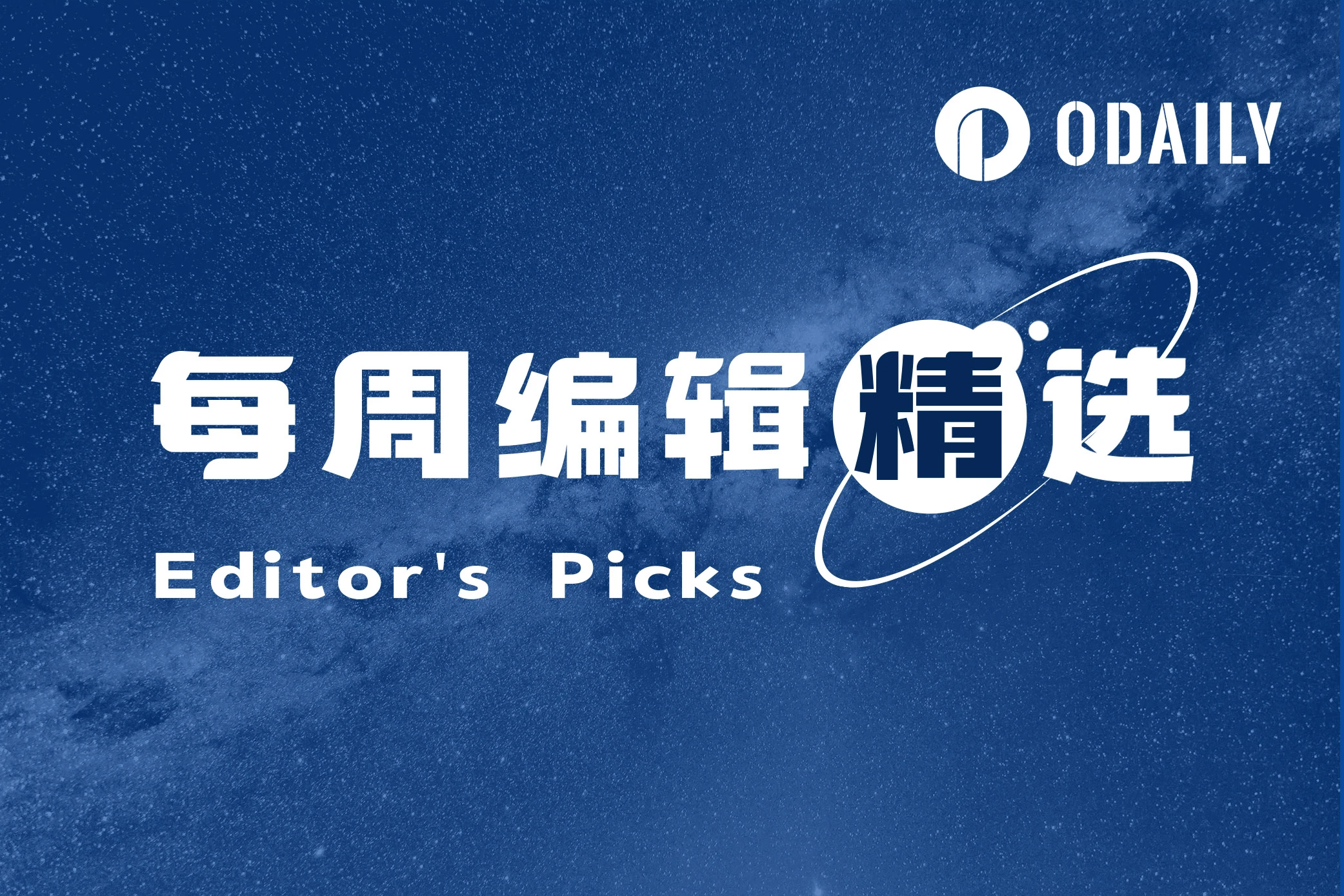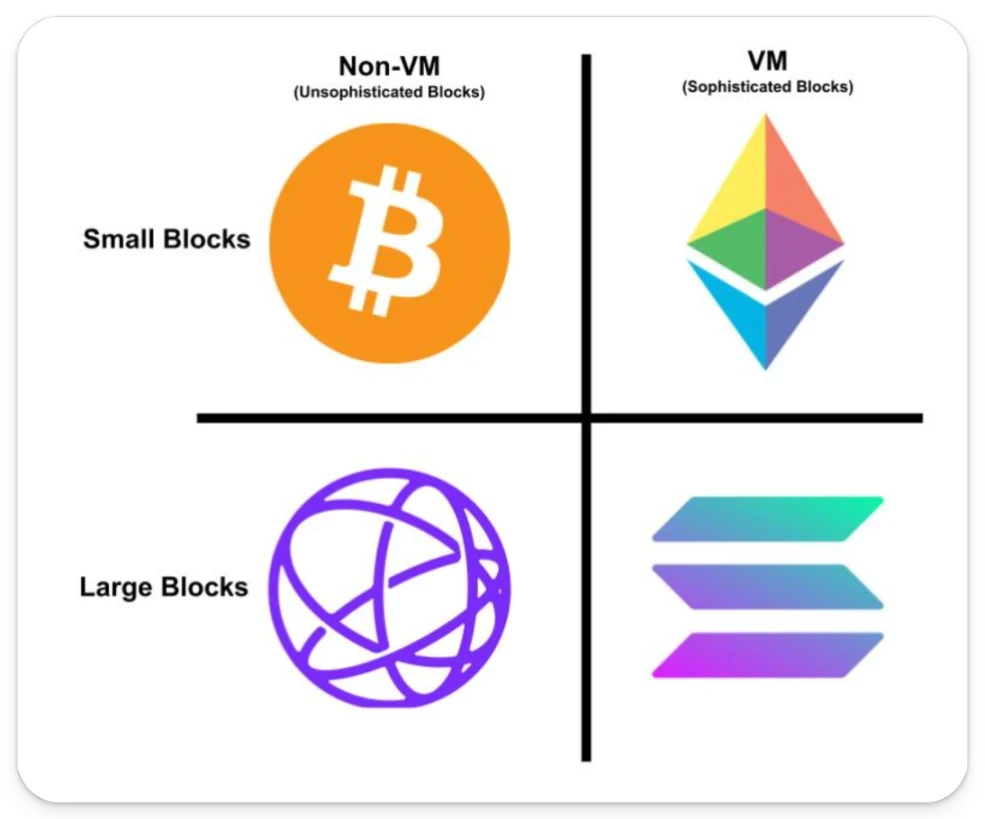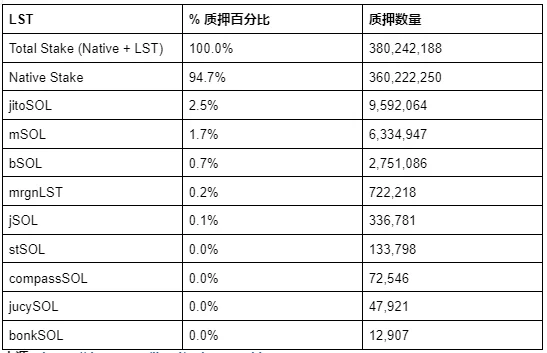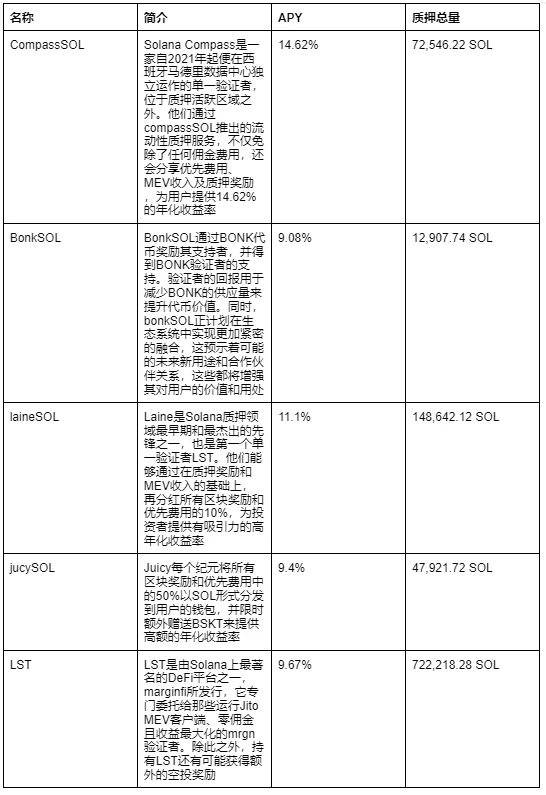Weekly Editors Picks is a functional column of Odaily Planet Daily. In addition to covering a large amount of real-time information every week, Planet Daily also publishes a lot of high-quality in-depth analysis content, but they may be hidden in the information flow and hot news, and pass you by.
Therefore, every Saturday, our editorial department will select some high-quality articles that are worth spending time reading and collecting from the content published in the past 7 days, and bring new inspiration to you in the crypto world from the perspectives of data analysis, industry judgment, and opinion output.
Now, come and read with us:

airdrop
The hair is getting more and more curly, what is the effectiveness of the points incentive?
The success of a points program depends on trust between users and project founders. While it provides advantages in terms of user engagement and fundraising, abuse of trust can undermine its effectiveness in the long run. This article analyzes five different types of unissued protocols on Solana: Zeta, Marginfi, Kamino, Drift, and Parcl (tokens have been launched as of the time of publication).
Most programs operate in a seasonal cycle, using each season as an opportunity to learn and adapt. An interesting observation is that the market situation seems to be more important than the points program itself. As the points program ends, the protocol becomes more willing to speak publicly about plans to further attract users.
Overall, most projects seem to agree on prioritizing clarity and transparency while retaining flexibility. Effective marketing also plays a key role in project success. However, it can be challenging to attribute metric improvements purely to new mechanics in the points system, as these improvements are often influenced by marketing efforts designed to spread awareness.
Bitcoin Ecosystem
There are two mainstream methods for attaching off-chain data to the chain on Bitcoin: engraving and etching.
Etching:
Advantages: The logic is simple, intuitive and clear, the transaction cost is low, and it does not occupy the full node memory pool.
Disadvantages: Limited to 80 bytes in length, requires highly compressed data encoding.
Engraving:
Advantages: Almost no size limit, certain privacy protection capabilities, multiple gameplay methods (time lock, proof of work), etc.
Disadvantages: Transactions need to be on-chain twice, resulting in higher final costs, longer commit duration, and greater pressure on the full node memory pool.
The Runes protocol is embedded in the Ordinals protocol itself. Its positioning as an FT protocol makes up for the original dilemma of Ordinals being only an NFT lacking market operation gameplay. The use of the op_Return method to record on-chain data allows Runes assets to have the ability of almost any organization and reproduce ledgers. Further reducing its degree of centralization also allows Runes assets to have a certain degree of security performance equal to BTC.
The disadvantages of the Runes protocol may be market timing, rule complexity, and future compatibility.
Also recommended are A Plain Language Interpretation of the Latest Developments in the RGB++ Protocol and Ecosystem , The Runes Protocol is about to be released, and we are taking stock of the projects, protocols, and tools that need attention, Runes is about to be launched, and we are taking stock of 7 projects worth paying attention to , With more than 20 infrastructure platforms, the Runes ecosystem has become a red ocean for gold mining , The Runes Protocol is about to be launched, and its principles, distribution rules, and estimated costs are analyzed from a technical perspective , The Runes Protocol is about to be launched, and this article takes stock of 10 Runes proxy tools , and Runes Ecosystem Guide: How to use tools to cast runes (with tutorials) .
Bitcoin Layer 2 Review (Part 1 ) ( Part 2 )
This series mainly introduces Bitcoin sidechain and UTXO, client verification, Roullp and Taproot Consensus in Bitcoin Layer 2.
Ethereum and Scaling
Bankless: Analyzing the Synergy of Ethereum’s Unified Architecture
Small blockers and big blockers are both correct. The key is to build a system that maximizes both. We need to go beyond the small block maximization limit to ensure that L2 can achieve functional escape velocity.

We need complex blocks, and should not expand the scope of L1 blocks to the point of reaching L2 functional escape velocity as this would unnecessarily compromise the decentralization and trusted neutrality of L1. Any additional L1 functionality can be deferred to L2.
We should stick to the small block concept. This represents a compromise between the two parties. Small Blockers must accept that their blocks become more complex and slightly harder to verify, while Big Blockers must accept a layered approach to scaling. Once this compromise is reached, the synergy will be maximized.
10,000-word explanation of EigenLayer design principles and future development
EigenLayer has evolved from a simple concept of sharing the security of the Ethereum network and generating additional income to expanding its ecosystem and meeting the needs of infrastructure builders and investors, launching numerous spin-off projects. AVS like bridges and sorters use the security of Ethereum to build their own network security, while investors see the potential to maximize the capital efficiency of ETH by leveraging LRT beyond LST.
Despite the high risk of EigenLayer-based AVS not yet running, many users still participate in re-staking to obtain points with no clear purpose. In addition, user interest in EigenLayer points has been accelerated through LRP and derivative protocols, so that at this stage, the capital in the LRT supported by EigenLayer is used to build a huge empire.
EigenLayer has undoubtedly sparked interest and expectations in the infrastructure industry and crypto markets, and with the launch of its mainnet fully operational, it will be necessary to closely monitor whether EigenLayer will bring Ethereum the new DeFi summer that some are looking forward to, or, as some worry, increase the complexity of Ethereum and potentially lead to a chain collapse.
A re-staking newcomer with a valuation of 1 billion, is Karak a vampire attack on Eigenlayer?
Karak Network is a re-staking layer with the advantage of multi-chain support. It technically supports multi-asset re-staking, re-staking anywhere, and a plug-and-play development environment. It is not a copy of Eigenlayer.
If Karak issues the coin first, it will indeed attract LRT from the entire market. More importantly, Karak’s own chain is already available, with acceptable speed and cost.
The controversy surrounding Karak mainly focuses on the products rapid withdrawal, the use of marketing methods such as points activities to seize the market, and the teams self-protection behavior.
Overall, Celestia pays great attention to scalability, interactivity and flexibility. The modular blockchain gives many vertical projects the opportunity to catch up.
However, like many public chains, innovation in the crypto world is currently stagnant. Most project parties rely on economic models. Perhaps there is insufficient demand for the underlying performance of the product, resulting in insufficient demand for Celestia. The inability of its own economic model to circulate positively is also a potential risk, and it will eventually become a ghost chain.
Multi-ecology and cross-chain
Metrics Ventures Research Report: Is Jupiter an Amplifier for Investing in Solana?
Jupiter is the top DEX aggregator on Solana and a leveraged target of the Solana ecosystem.
Jupiter’s founder Meow argued in a Reddit AMA that the JUP token was not designed for practicality, and that JUP’s price growth will come from value rather than actual utility.
Solana’s Liquidity Staking Landscape is About to Change
Current liquid staking on Solana only accounts for 5.3% of all staked supply.

Brand value and the Lindy effect (the future life expectancy of a technology or idea is proportional to its current existence) play an important role in this process. Over time, these factors gradually accumulate, favoring solutions that excel in security, liquidity, and integration, leading to a winner-takes-all situation in the field of liquidity staking. Long-tail LSTs are about to emerge in large numbers. To ensure the survival of long-tail LSTs, the key is to solve the liquidity problem.

Examples of emerging LST
We are likely to see a more diverse LST ecosystem on Solana. In this case, it will be particularly important for projects like Sanctum to help unify the liquidity of LST in the Solana ecosystem.
The Parallel EVM craze is on the rise again. Which projects are worth paying attention to?
Monad, Sei, Artelo, Canto, Neon, Eclipse, Lumio.
This article clarifies chain abstraction, interoperability, full chain, and track core projects
The cross-chain protocols launched in this cycle are basically chain abstraction protocols. They all have functions such as cross-chain information transmission and cross-chain assets. The leading ones are LayerZero, Wormhole, and Axelar, and others include ZetaChain, Polyhedra, and Particle Network. Their implementation methods and usage technologies are different.
Also recommended: Detailed Explanation of the Four Little Dragons of Chain Abstraction: Omni Network, Cycle Network, Initia, Polymer .
GameFi
Why hasn’t there been a hit blockchain game in this bull market?
History has proven that games are the entry foundation for an emerging industry to enter the application layer (C-end). Games are props for the general public to seek happiness and excitement. Those who win the C-end must first win the games.
Web3 games have not yet developed because it is too early and off track. The convenience of payment and transactions can be further improved.
At the beginning, the project needs to be regulated by visible hands. We cannot allow various tokens to circulate too freely. We must first let them mature in the system. The hot-selling blockchain games in this round of bull market should at least have achieved unprecedented innovation in some aspects, otherwise users who are already tired of various Earns will not buy them. Or perhaps the innovation has already appeared in a certain project, just waiting for a detonation point.
Web3, AI and SocialFi
Turning Idle Equipment into Treasures? These 9 Web3 Projects Are Worth Paying Attention to
Old mobile phones and old computers can be revitalized and converted into powerful assistants for participating in mining, running nodes, and sharing computing resources, thereby earning tokens or points rewards without worrying about the risk of information leakage or data abuse.
The article introduces 9 Web3 projects: io.net, ola, Grass, Over Protocol, Nodle, UpRock, Kuzco, Nimble, and Acurast.
Looking for the next Alpha, here are 9 popular projects in the intention track
The article introduces dappOS, Anoma, Particle Network, Essential, Self Chain, Orb Stack, Orby, Orbiter Finance (Orbiter Rollup), Across v3, and Aperture Finance.
Interpretation of three Crypto+AI projects worth paying attention to recently
Bittensor: Leading in market value, but its practicality is questioned by the market; Ritual: Backed by a super luxurious background, it uses ZKP for AI model reasoning training; Virtual: More interesting and focuses on user participation.
In addition, there are io.net, which focuses on the GPU rental market, Autonolas, an AI proxy protocol, and MyShell, a Web3-enabled AI platform focused on creators.
9 AI and infrastructure projects worth watching
The article introduces ZeroGravity, Nim Network, Talus, Movement, Particle Network, Espresso, Lava Network, NodeKit, and Caldera.
Crypto Adoption to Mass Adoption: When Will Web3’s Facebook Moment Come?
Discords highly open source nature is nothing short of an iterative innovation in Internet social networking. Sufficiently rich custom permissions have begun to allow people to taste the sweetness of decentralized communities, but this seems to be a little short of the real Web3 - the decentralization of the community economic system.
In the Socialfi track, the first-generation representative product Lens Procotol has attracted much attention for its extremely grand narrative and SocialFi concept, aiming to become the basic data layer for on-chain social networking. However, the task of improving on-chain infrastructure is long-lasting, labor-intensive, and because it has not found a suitable way to embed assets in the product, in the early days of SocialFis development, the earning money effect of users in the protocol was too weak, resulting in the inability to achieve long-term user retention. In 2023, the second-generation Friend.tech became a phenomenal hit. In the third generation, new paradigm products represented by Farcaster and UXLINK began to emerge.
The balance between strengthening social functions and enhancing financial attributes is difficult to grasp, and is also the core of the success or failure of decentralized social platforms. The essence of balance is to introduce externalities to create and sustain profit expectations for users.
AI technology brings huge development potential to Web3 social platforms. It can not only improve user experience and promote community interaction, but also demonstrate value in multiple dimensions such as platform security and incentive mechanisms.
The third-generation Web3 social products are actively exploring ways to break through, such as emphasizing the concept of socializing among acquaintances and product strength; at the same time, they can learn from the ecological construction strategies of Farcaster and UXLINK.
Archaeological DePIN, looking for the orthodoxy of the track
New projects emerge entirely in response to industry needs, and the projects we saw in the early days were almost all aimed at Crypto.
The mode of combining DePIN and blockchain is consistent with the logic of cloud service network, but the only difference is that different functions will produce different connection methods and usage methods. DePIN can obtain legitimacy from the Internet cloud service and Internet of Things working mode, and this legitimacy is actually the legitimacy of the public chain network in functional application, that is, sharing resources (computing power, storage, bandwidth, data) in an open environment. At present, there is not much incremental growth in the industry, which is also the main reason for the low market value. There is indeed a problem of high threshold in the industry. The cryptocurrency field may not understand the hardware industry, and the hardware industry cannot quickly enter the use of blockchain and cryptocurrency as tools. However, with the help of the middle-layer role, growth is expected, and with the help of the middle layer, it is not difficult to enter the market for various applications.
In the future, when DePIN brings the legitimacy of real-world businesses into the crypto world, the DePIN project will be able to stand on equal footing with the public chain.
Hot Topics of the Week
In the past week, Bitcoin completed its fourth halving . The top five Bitcoin mining companies did not sell Bitcoin due to the halving. The conflict between Israel and Iran intensified , and the overall crypto market fell . Hong Kong Bitcoin spot ETF ushered in major progress. Beijing Business Daily: Hong Kong BTC, ETH spot or futures ETF related products are temporarily not open to mainland investors . Elon Musk : Accounts involved in farming activities will be frozen, including guiding users to forward, comment and like posts. The proposed settlement agreement between Genesis bankruptcy case and creditors is under review;
In addition, in terms of policies and macro markets, the SEC accused Sun Yuchen of frequently traveling to the United States to sell tokens. Vietnamese officials said that Vietnam did not ban cryptocurrencies, but it was necessary to develop a legal framework. People familiar with the matter said that Binance planned to pay a fine of about $2 million to return to India . Binance obtained a virtual asset service provider license in Dubai .
In terms of opinions and voices, Bloomberg ETF analyst: The estimated inflow scale of Hong Kong spot Bitcoin ETF is about US$500 million, which may not attract a large amount of funds. 10x Research : Risk assets such as cryptocurrencies are on the verge of a major price adjustment. Matrixport : Judging from the market share of Bitcoin, a broader rise may still be in its infancy. Tyr Capital CEO : BTC is expected to hit $120,000 in the next few months. CZ: Bitcoin halving is different from stock splits, happy halving. Placeholder : DeFi is booming, but the next step for Web3 is non-financial applications. Fortune: In addition to the CEO, Coinbase is mainly controlled by 7 people. He Yi : CZ is currently in a normal situation in the United States, and regulatory pressure is already expected internally. Vitalik Buterin: Railgun can effectively prevent malicious actors from joining, and privacy should become the norm. Pantera Capital partner: Memecoin is a Trojan horse for cryptocurrency;
In terms of institutions, large companies and leading projects, Tether s tokenization platform will soon be open to everyone. Tether will expand USDT support to the TON network. Telegram Wallet released an update: supporting users to transfer USDT to their Telegram contacts for free. TON Foundation : 11 million Toncoin incentives for early adopters of USDT on the chain. Uniswap has increased the token exchange fee from 0.15% to 0.25%. The lending positions of Curve founders on various platforms have entered the danger zone. Binance launched the token issuance platform Megadrop , and the first project is BounceBit (BB). OKX launched its zk L2 X Layer public mainnet. EOS launched a new packaged asset class WRAM to promote the global expansion of blockchain resource accessibility. EigenLayer has lowered the EigenDA verification node staking threshold from 320 ETH to 96 ETH. Jupiter announced the launch of the LST token JupSOL. Jupiters second round of LFG Launchpad voting has started, with a total of six candidate projects including Sanctum, WorldCoin Announced the launch of the second-layer network World Chain , which is scheduled to be launched this summer. Merlin Chain opened MERL airdrop applications, unlocking 50% in the first month. Parcl announced the community PRCL token distribution plan and opened airdrop application inquiries. Ore suspended all mining activities. Ethena (USDe) faced stress testing in the falling market.
In the field of NFT and GameFi, STEPN announced the details of the first-day access whitelist : Adidas and FSL communities will be given priority. Adidas has reached a cooperation with STEPN and will release a new joint Genesis shoe through Mooar on April 17. Animoca Brands announced its financial report: it holds approximately US$558 million worth of digital assets and US$291 million in cash and stablecoins... Well, its another week of ups and downs.
Attached is a portal to the “Weekly Editor’s Picks” series.
See you next time~










